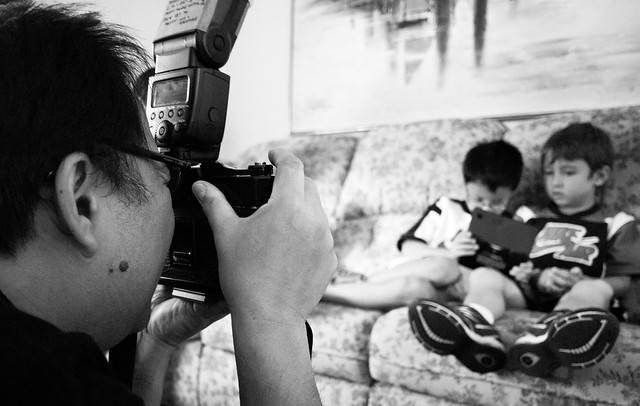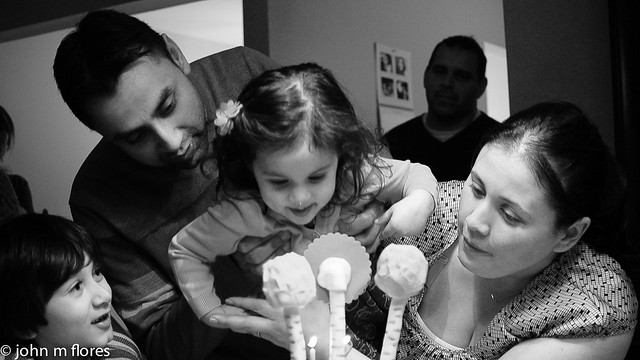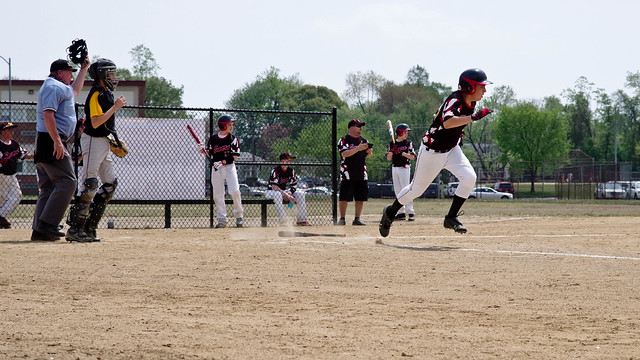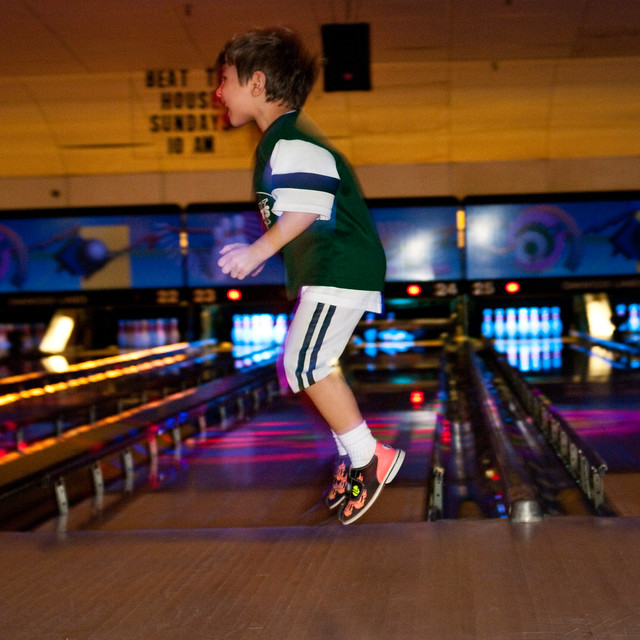We all know how demanding pros can be of their gear. They require the ultimate in image quality and durability because there’s no good excuse for missing that important shot. No working pro with her or his salt should ever have to utter these words, “Sorry {newlyweds/client/news editor}, I missed the {first kiss/board room group portrait/Pulitzer-winning photo} because of my {cheap/slow/broken} gear.” But you know what? There’s a group of photographers that’s even more demanding than the pros.
This group that I’m thinking of needs more durability than conflict photographers, more responsiveness than sports photographers, and more image quality than fashion or art photographers. Anyone care to guess who they are?
Parents.
Seriously. I’m not talking about the online photo-forum loitering camera buffs that suddenly decide to pump out an offspring or three after they’ve purchased their fourth camera bag. They don’t count because they’ve got gear older than their children. I’m talking about the kind of parents that think Aperture is the new boy band from England, the kind of parents that don’t know their ISO from their ASA. The kind of parents that don’t know who Ken Rockwell is. Or care.
Just as importantly, the kind of parents that I’m talking about have children that move faster than an NFL running back. They live in homes that aren’t lit with studio lights, and if their children play sports or are in the drama club or chorus or are in the middle school talent show, they are performing in gyms and auditoriums that don’t have the same lighting systems as Madison Square Garden or Carnegie Hall.
These parents usually have a limited budget, or at least aren’t as good as rationalizing another brown box from the man in the brown shorts if it doesn’t contain a binky or a piece of youth sports gear. And even if they do spring for the Canon 5DIII with the fancy white lens, they’ve got limited skills, limited time to learn, and limited attention span.
And so, with their usually non-pro gear and very little practice or training, they hope to document the next big life event of their little prince(ss) with a camera they purchased at Best Buy on the advice of the salesperson pushing the gear that gets them the biggest spiff. Eight times ouf of ten that’s an entry level DSLR from Nikon or Canon because they can look at it and see the hereditary link to the cameras they see on the sidelines at the Super Bowl; the one that the 250 pound linebacker runs over while tacking the 225 pound running back. That tenuous genetic link gives them the confidence that they’re buying the right camera. Never mind that it’s a generation out of date. Never mind that the kit zoom has an aperture the size of a straw at full zoomage. Most importantly, never mind that they don’t know how to use it. They go to that play/sporting event/birthday part with that new camera safely packed inside the Case Logic bag that was included in that package deal and hope for the best. I was gonna say, “channel their inner Henri Cartier-Bresson” but they don’t know who he is either. Isn’t he the guy that makes watches?
When the performance starts, they’ll set the camera to the green box mode like the guy in the store suggested (or maybe the icon with the runner), zoom in as much as they can with the kit zoom and turn on Live View. If their youngster accidentally touches the lens, they’re not going to break out the Eclipse cleaning fluid and Pec Pads. The only blower within reach is actually a suction bulb used to take stuff out of little Suzie’s nose. And their synthetic shirt is as good a place as any to clean the lens, unless of course it is protected with a cheap UV filter. And in the post-performance scrum, the camera’s dangling by its shoulder strap and getting jounced by guardrails, diaper bags, and other stuff. But that’s ok; the camera’s been linebacker-tested.
Now I mean no disrespect to parents, as they clearly have more important things to do, and some of them manage to get some nice shots despite the challenges. It’s not art. It’s more important than that. It’s life. But forget about the pros, these are the users that keep the camera designers and engineers and product managers up at night.





